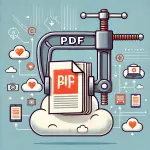WebP vs JPEG: Which Image Format Should You Choose?
An In-Depth Exploration of Image Formats for the Modern Web
In the world of digital media, selecting the right image format can have a substantial impact on website performance, user experience, and SEO. WebP and JPEG are two prominent image formats that each offer unique benefits. While JPEG has been the industry standard for decades, WebP—developed by Google—is a newer format that promises superior compression and additional features like transparency and animation. To make the right choice, it’s crucial to understand how these formats compare in terms of compression, quality, browser compatibility, and use cases. In this expanded guide, we’ll explore each factor in detail to help you determine which format is best for your specific needs.
1. Understanding Image Compression: Lossy vs Lossless
Before diving into WebP and JPEG, it’s important to understand the concept of image compression. Compression is the process of reducing the file size of an image while retaining as much quality as possible. There are two main types of compression: lossy and lossless.
- Lossy Compression: This method reduces the file size by permanently discarding some of the image data. It results in smaller files but can lead to noticeable quality degradation if overused. Both JPEG and WebP support lossy compression, but WebP achieves better results with smaller file sizes and less loss in visual quality.
- Lossless Compression: This method compresses the image without any data loss, preserving 100% of the original image quality. WebP supports lossless compression, while JPEG does not, making WebP more versatile for situations where image quality is paramount.
2. WebP: A Modern Solution for High-Performance Websites
WebP is a relatively new image format developed by Google to create high-quality visuals that load quickly on websites. The goal of WebP is to provide a highly efficient compression algorithm that minimizes image file sizes while maintaining excellent quality. This makes it ideal for the performance-focused web, especially in an era where mobile browsing dominates.
Advantages of WebP:
- Superior Compression: WebP typically provides 25-34% smaller file sizes than JPEG without sacrificing image quality. This makes it ideal for web designers looking to speed up page load times without compromising on visual aesthetics.
- Transparency Support: Unlike JPEG, WebP supports transparency (alpha channel), which makes it a versatile option for images that require transparent backgrounds—such as logos and product images.
- Animation Capabilities: WebP supports animated images, offering a modern alternative to GIFs but with significantly smaller file sizes and higher quality. This can be especially useful for web designers looking to add interactive or dynamic content.
- Lossy and Lossless Options: WebP supports both compression types, offering greater flexibility in optimizing images based on the specific needs of a website or application.
Drawbacks of WebP:
- Limited Compatibility: While WebP is supported by most modern browsers, including Chrome, Firefox, Edge, and Opera, it is not universally supported by older browsers (like Internet Explorer) or some older versions of Safari. This can present challenges for businesses or websites that cater to users with outdated technology.
- Software Support: While gaining ground, not all graphic design or image editing tools fully support WebP. Some legacy systems or platforms may still rely heavily on formats like JPEG or PNG, requiring conversions for cross-platform compatibility.
3. JPEG: The Long-Standing Standard in Digital Imaging
JPEG (Joint Photographic Experts Group) has been the dominant image format since the early 1990s. It uses lossy compression to reduce image file sizes, which makes it highly effective for storing and sharing digital photos. JPEG’s simplicity and widespread compatibility make it a versatile format, but it falls short in certain areas compared to WebP.
Advantages of JPEG:
- Widespread Support: JPEG is universally supported across all devices, browsers, and operating systems. Whether you’re viewing an image on an outdated browser or editing in legacy software, JPEG will always work.
- Adjustable Compression: JPEG allows users to control the level of compression applied to an image, balancing file size with visual quality. This makes it ideal for a wide range of use cases, from high-resolution photography to web graphics.
- Simple and Reliable: JPEG is perfect for photographs and images where transparency or animation isn’t required. Its lossy compression works well for detailed images with many colors and gradients.
Drawbacks of JPEG:
- No Transparency Support: One of JPEG’s most significant limitations is its lack of support for transparent backgrounds, which are often essential in modern web design.
- Quality Degradation: JPEG’s lossy compression permanently discards some image data, which can lead to noticeable degradation in quality, particularly after multiple edits or resaves.
- No Animation Support: JPEG does not support animated images, making it less suitable for dynamic content on modern websites.
4. Compression Efficiency: WebP vs JPEG
One of the most critical factors when choosing between WebP and JPEG is compression efficiency. WebP generally provides smaller file sizes for the same image quality compared to JPEG. This efficiency is particularly noticeable for high-resolution images or websites that rely on fast load times.
A Real-World Example:
- A typical high-quality JPEG image might be 300 KB in size.
- The same image compressed in WebP can be as small as 200 KB or even less, without any noticeable loss in quality.
For websites that handle large volumes of images, this difference can translate into a significant reduction in bandwidth consumption, faster page load times, and improved user experiences—especially on mobile devices or slower internet connections.
5. Transparency and Animation Support: A WebP Advantage
JPEG is limited by its inability to handle transparency and animation. WebP, on the other hand, excels in both areas:
- Transparency (Alpha Channel): Transparency is essential for logos, icons, and other design elements that need to blend seamlessly with various backgrounds. JPEG lacks alpha channel support, forcing designers to use formats like PNG when transparency is needed—at the cost of larger file sizes. WebP combines transparency with small file sizes, making it ideal for web design.
- Animation: WebP also supports animated images, much like GIFs but with significantly better compression and image quality. This makes it a strong contender for websites that require lightweight, dynamic images.
6. Browser and Software Compatibility: The Trade-Off
Browser Compatibility:
- WebP: Supported by Chrome, Firefox, Edge, and Opera, but older versions of Safari and Internet Explorer don’t fully support it.
- JPEG: Universally supported across all browsers, including older versions of Internet Explorer, Safari, and other outdated platforms.
Software Support:
- WebP: While gaining popularity, WebP may not be fully supported by all graphic design tools. Conversions to other formats like PNG or JPEG may be required for editing in legacy software.
- JPEG: Fully supported by all image editing software, design platforms, and content management systems, ensuring seamless integration across all workflows.
7. SEO and Website Performance: Why File Size Matters
Google has made it clear that website speed is a ranking factor in search results, meaning faster websites tend to rank higher. Since images account for a significant portion of a webpage’s weight, optimizing image file sizes directly impacts website performance and, in turn, SEO.
- WebP for SEO: By compressing images more efficiently, WebP allows websites to load faster, reducing bounce rates and improving user engagement. This can lead to higher search rankings and better visibility in search engines like Google.
- JPEG for SEO: While JPEG offers smaller file sizes compared to uncompressed formats, it doesn’t match WebP’s efficiency. If SEO and website speed are top priorities, WebP may be the better choice for image optimization.
8. When to Use JPEG
- Compatibility is Key: JPEG is still the preferred option for older browsers, legacy platforms, and situations where compatibility across a wide range of devices is crucial.
- Photographs and Detailed Images: JPEG excels in compressing detailed photos with subtle gradients and colors. It’s perfect for photo galleries, blogs, and ecommerce sites where large quantities of photos are displayed.
- Minimal Compression Needs: For users who don’t require aggressive compression or who need to frequently edit and resave images, JPEG is reliable and straightforward.
9. When to Use WebP
- Website Speed Optimization: WebP’s smaller file sizes make it ideal for web performance. Use it to speed up your website, especially if it features a lot of images, such as ecommerce platforms or blogs.
- Mobile-First Websites: With the majority of web traffic coming from mobile devices, WebP’s superior compression helps deliver faster load times on mobile networks, improving the user experience.
- Logos, Icons, and Transparent Images: If your site uses a lot of design elements with transparent backgrounds, WebP’s transparency support is a major advantage.
- Animation Needs: For websites that feature animated images or elements, WebP provides a far more efficient alternative to GIFs, with better image quality and smaller file sizes.
10. Conclusion: Which Format Should You Choose?
The decision between WebP and JPEG comes down to the specific needs of your project. If your goal is to optimize for speed and SEO, especially for a modern, mobile-first website, WebP is the clear winner. Its smaller file sizes, transparency support, and animation capabilities make it a versatile choice for most web applications.
However, if you need maximum compatibility across older browsers and platforms, or if you’re working with photo-heavy content, JPEG remains a reliable and universally supported format. In some cases, using both formats in tandem—JPEG for photographs and WebP for graphics—can provide a balance between performance and compatibility.
As more browsers and platforms adopt
more support, WebP’s superior compression and versatility give it an edge for modern web design, particularly for websites focused on performance and mobile users. Meanwhile, JPEG remains a solid choice for compatibility across older platforms, making it suitable for photographers, legacy browsers, and large-scale image libraries.
Ultimately, choosing the right format will depend on the specific use case: WebP for speed and modern features, and JPEG for compatibility and simplicity. A hybrid approach using both formats in different contexts can offer the best of both worlds.
![]()



